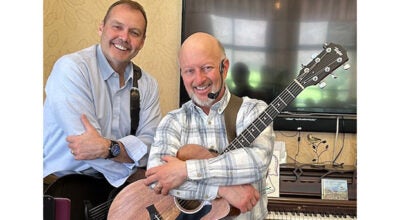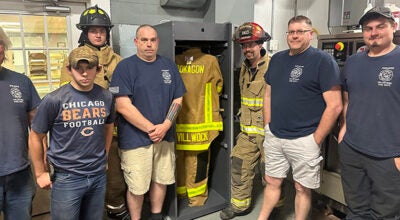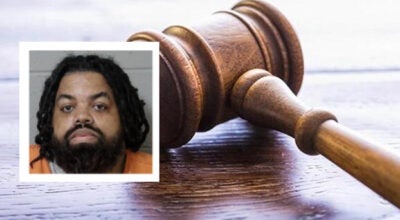City of Dowagiac adds virtual signage to sculptures
Published 8:00 am Thursday, May 8, 2014

Bobbie Jo Hartline and Fritz Olsen test out the new QR code posted outside “Sunflower” statue in Beckwith Park. Olsen, the creator of the sculpture, visited Dowagiac while crews installed the new signs. (Submitted photo)
While the art of sculpting is almost as old as history itself, the pocket-sized devices that have become an integral part of many American’s lives are considerably younger.
Despite the age discrepancy, the two make a pretty interesting couple.
On Tuesday, the City of Dowagiac began the installation of a series of signs outside each of its 15 pieces of public art. Each will sport a digital barcode, or QR code, that can be scanned by a smartphone camera, which will automatically send a link to the phone’s web browser, opening the city’s new Sculptour website.
The new signage provides a method for tourists to easily discover more information about the city’s collection of sculptures, said Bobbie Jo Hartline, who invented the Sculptour website.
“If you’re visiting or new to the city, you wouldn’t know that there’s a map. You wouldn’t know that there’s a brochure. You wouldn’t know that there’s 14 other sculptures in the city,” Hartline said.
On the afternoon that the city’s crews installed the signs, Hartline was visited by Fritz Olsen, the creator of the “Sunflower” statue in Beckwith Park. The two stopped by Olsen’s sculpture downtown, testing the QR code placed in front of it.
“It was fun to see his reaction to it,” Hartline said. “He is traditionally not a tech guy, but he thought it was a cool opportunity to use technology to introduce public art to the community.”
Olsen was in town for the day to help his significant other, Martha Cares, drop off a piece of art she is submitting for the Dogwood Fine Art Festival’s Art Walk, Hartline said. The couple ended up spending the rest of the day in the city, walking their dog, visiting local shops and checking out the other sculptures around the city.
“That’s what you would want any visitor to do while they’re here, to enjoy the city and look at some our gems in the process,” Hartline said.
It’s not just artists who are getting a kick out of the digital enhancements, but other tourists as well. While Hartline and Olsen tried out the codes on their phones, a touring couple asked them if they could try it on their phones, and ended up taking their own stroll to visit the other sculptures downtown, Hartline said.
“The signs were only a couple hours old and people were already trying them out,” she said. “That was pretty fun to watch.”
The Sculptour website launched early last month, providing an online resource for people to learn about each of the statues dotting the Dowagiac landscape. The site also provides a number of travel routes for people wanting to visit each of the public landmarks on foot.
The addition of the QR codes is latest in a series of features Hartline and the city have in plan for the website. Other ideas include video interviews with artists, the inclusion of other public works into the routes and tips for incorporating walking into a healthy lifestyle, Hartline said.
“This is only a baby step to where I see it going in the next few months,” she said. “I bet it will look totally different in the next year or so.”
The Sculptour site can be found at sculptour.cityofdowagiac.com.






